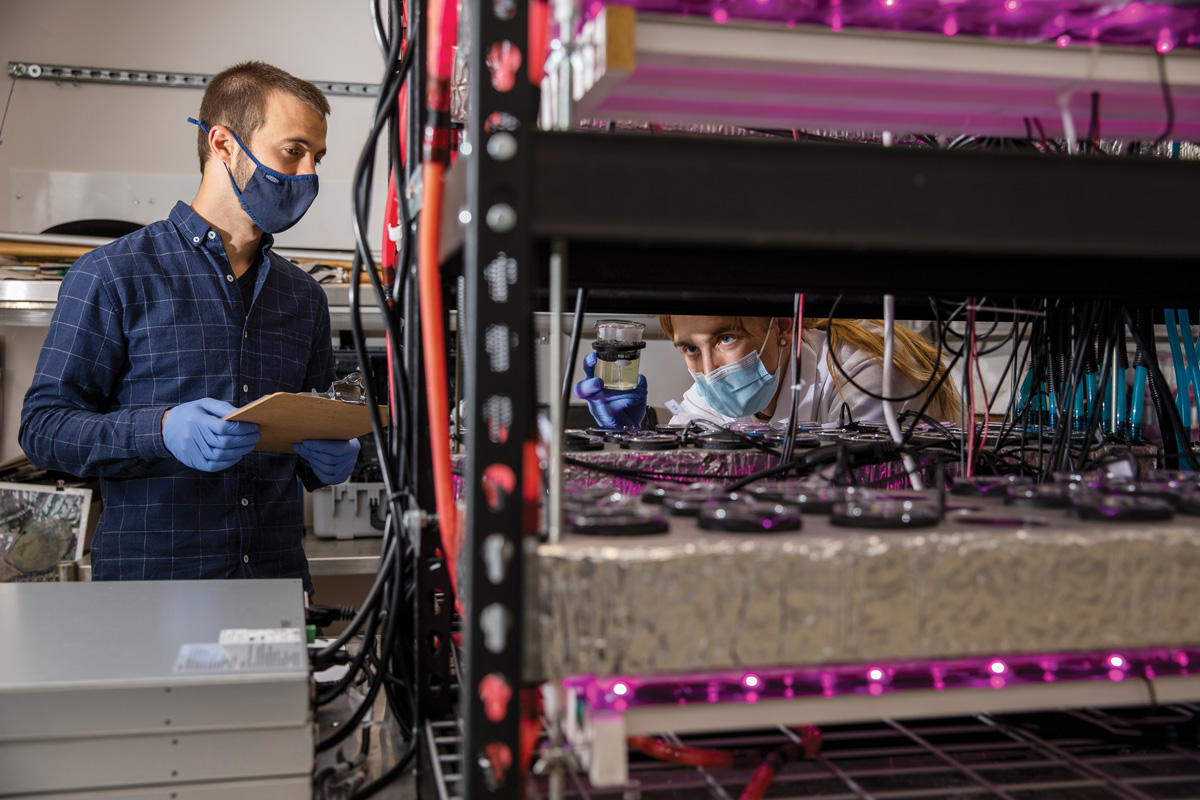Life and Death in a Drop of Water
Reed College biologists focus on phytoplankton for clues to ecological resilience and adaptation.
They grow by the thousands in a single drop of water. Phytoplankton—microscopic aquatic plants—are a fundamental link in the ecosystem, generating about half the oxygen in the earth’s atmosphere.
A team of biologists led by Prof. Sam Fey recently published new findings that shed light on how phytoplankton respond to big swings in temperature—findings with significant implications for how ecologists make predictions about the ultimate fate of populations in unstable ecosystems, from sea urchins to manatees to human beings.
“Now we have a framework that can help us make better forecasts—to predict how organisms respond to environmental fluctuations, and when or whether a population will go extinct,” says Prof. Fey.
The research, which is supported by a multiyear grant from the NSF, focuses on a phenomenon known as phenotypic plasticity, which is where an individual responds to changing environmental circumstances in its own lifetime. For example, the coat of the arctic hare turns white during the winter to provide camouflage in the snow, then turns brown in the spring when the snow melts.
Until recently, many ecologists simply omitted phenotypic plasticity from their models because it was so poorly understood. But fudging this factor can obscure crucial issues when conditions change rapidly. For example, if snow on a particular mountain starts to melt earlier in the season, the hares may still be white and will be soon picked off by hungry predators—a scenario that could swiftly lead to population crash or even extinction.
Plankton are useful organisms in which to study this question, because of their remarkable growth rate (under ideal conditions the population can double every 24 hours) and their exquisite sensitivity to temperature, which is easy to measure and manipulate.
The team, which included Maeve Kolk ’19, Delaney Brubaker ’21, biology lab manager Tamara Layden, and researchers from UCLA and Yale University, studied colonies of phytoplankton both in the lab and in the canyon that runs through the Reed College campus. After years of work, they developed a new mathematical framework for predicting the effect of plasticity when conditions change suddenly. In particular, they were able to predict how a colony of plankton would respond to sudden spikes in water temperature.
The findings, published in Ecological Monographs and Limnology and Oceanography Letters, should help biologists make better predictions about the long-term survival of organisms whose landscape is changing before their eyes.
Tags: Academics, Climate, Sustainability, Environmental, Institutional, Professors, Research
